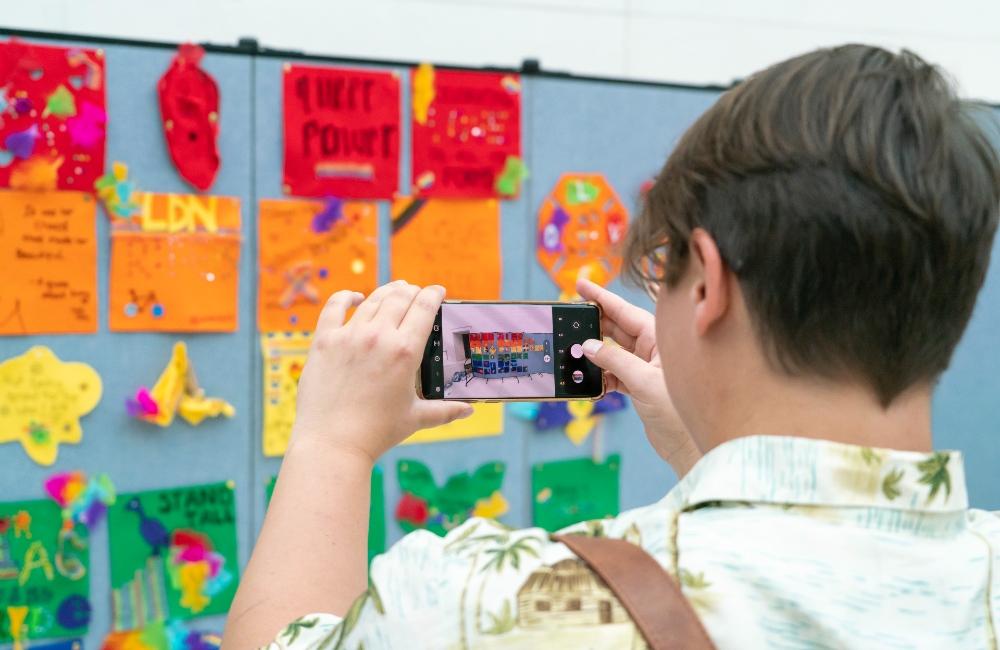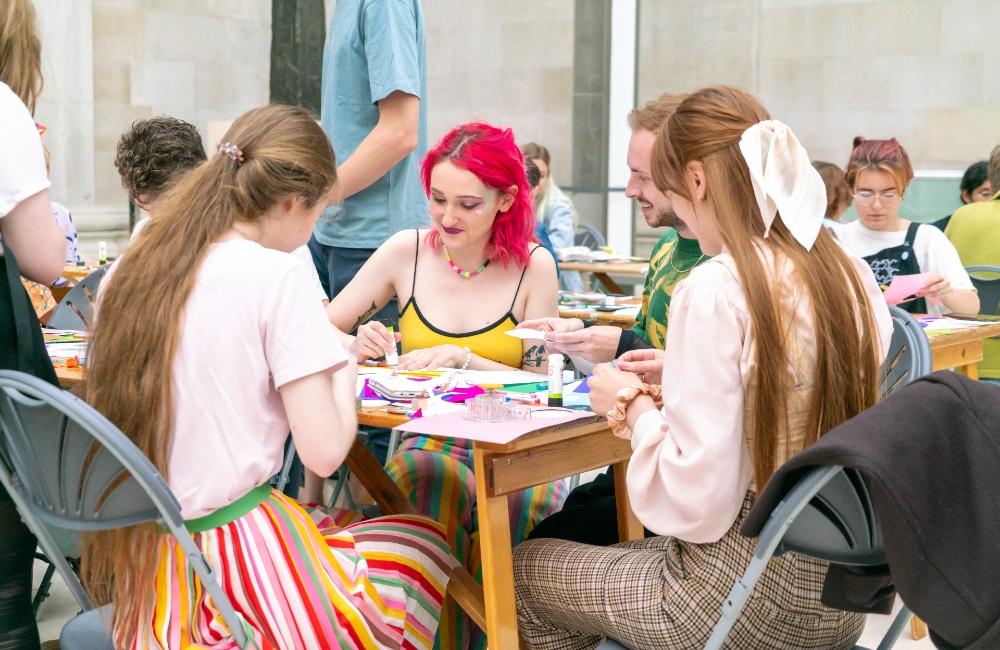Hear from members of the British Museum's Youth Collective as they reflect on their latest LGBTQ-themed event and consider what Pride means for them.
Intro
In the wake of Pride month in June, the 2022 British Museum Youth Collective, a group of 18–24 year olds working to create change at the British Museum and inspire other young people to engage with the Museum's collection, recently put on their first event. The Celebrating Pride Late was a collaborative event arranged by the Museum's Learning and National Partnerships department, including the Youth Collective. Here, members of the Youth Collective reflect on the event and consider what it meant for them, for LGBTQ rights and for the Museum.
Why was the event important to you and what did you learn from it?
Gabby: I come from a country that marginalises and still does not recognise the rights of LGBTQ people, so to have a major institution like the British Museum host this event felt extremely validating. To have Pride exist so unapologetically in this space and to see it so enthusiastically supported at the Museum was self-affirming and empowering. I think it's really important for LGBTQ people to feel represented at an institution like the British Museum – which can often seem large and intimidating. During the Late, the Museum became a space where I could meet other people like me who were equally passionate about Pride, a place where we could talk about our own experiences and feel safe and seen.
Mikah: I think that it's very important for LGBTQ people, especially younger LGBTQ people such as myself, to be able to learn about their own history and to see themselves being represented in large institutions such as the British Museum. It was brilliant to see people of many different backgrounds at the event, engaging with objects in the collection and the activities, as well as interacting and learning from each other. From this, I've learned that events that focus on specific communities, more specifically communities that may not be properly represented in museums or society at large, are crucially important.
Gerald: This event is important to me because it offers the marginalised LGBTQ peoples a chance to insert their narrative into a place like the British Museum, with its historical weight and problematic history. It opens up the Museum somewhat, democratising it and making it a more inclusive space, as opposed to the preconception that the Museum is an elite, academic space.
What does Pride mean to you – and has that changed over time?
Gerald: I used to think that Pride was about coming out, owning your queerness, and being loud and unapologetic about it. I still think that this facet is integral to the ethos of Pride. Yet every time I learn more about queer history, especially its intersections with Asian identity, I become more convinced that Pride to me is both a feeling of being part of something larger than yourself, as well as being empowered enough yourself to know that you can forge the future of this culture. It's Pride of a history that is rich and colourful, but also inherently liberating.
Gabby: In the beginning, Pride for me was about self-acceptance — relinquishing internalised shame and instead finding the courage to express your identity. Integral to Pride is also a sense of community and belonging, which makes it possible to feel accepted and included. But as I read more about queer history, I've also realised that the history of Pride is rooted in solidarity and indivisible from protest and resistance. Pride is simultaneously a celebration of the past and of everyone who has fought for intersectional equality, but is also the present fight for acceptance and liberation.
Mikah: When I was younger, Pride meant accepting yourself for who you are while being openly and unapologetically yourself. While these things still do apply to what Pride means to me, I've learnt with time that it can encompass other aspects of identity and different demographics within the community. For example, this could be related to different ethnic communities, disabled people and people of different ages for example. How people express their LGBTQ identity will be influenced by these demographics and histories, therefore making the way Pride is expressed and experienced very individual and personalised.
What excited you about the event at the Museum?
Gerald: It excited me to see the British Museum as a safe space for queer people of all ages. One of the things that worries me the most in the queer community is the generational gap, especially among gay men. Having cross-generational LGBTQ people participating, communicating and working together on our activities was so heart-warming. I hope it was also beneficial in bridging that gap and understanding each other. I am also so excited about presenting events that simultaneously reflect the LGBTQ world today while paying heed to the queer culture we have inherited. The 'Pride, Pins and Protest' badge-making workshops referenced decades of the pin's place in queer culture, as well as pins in the British Museum's collections, but we saw so many astoundingly creative new works produced by visitors at the event. We also invited the drag king Hot Rod to 'Get Ready' with the audience, talking about their experience as a drag king. We were a bit nervous as this was far from the drag performance one would expect, with all the glitter and fanfare, but the audience loved hearing what Hot Rod has to say about gender and performing queerness. Seeing LGBTQ people across generations interact with each other so respectfully gave me a lot of pride.
Gabby: What I really looked forward to most about the British Museum Pride Late was meeting other queer people and allies who were just as enthusiastic and excited about Pride. Getting to talk to visitors of all generations and hearing about their experiences and their stories has been eye-opening, and I really felt like part of a community. I was also really excited to see the 'Get Ready with Me' event with Hot Rod, a drag king. Drag kings are less prevalent in popular mainstream culture, so I was looking forward to meeting Hot Rod and hearing about their experiences and their process of transformation.
Mikah: What excited me about the event at the British Museum was about how collaborative and interactive it was. The Pride, Pins and Protest badge-making workshop gave people examples of badges that were used in the LGBTQ movements in the 20th century for inspiration to make their own. It was great to see how artistic and creative the visitors of the event were, as well as them hopefully learning about LGBTQ history in reference to the social movements in the 1970s and 80s. Also, it was really exciting to see the objects that were in the Desire, Love, Identity: LGBTQ Histories Trail, as I believe it really widened the scope what most people would think of when they think of LGBTQ history, especially in regards to different cultural ideas on gender.
Discover more LGBTQ stories and objects from the collection in the book A Little Gay History by R.B. Parkinson, available in our shop.








